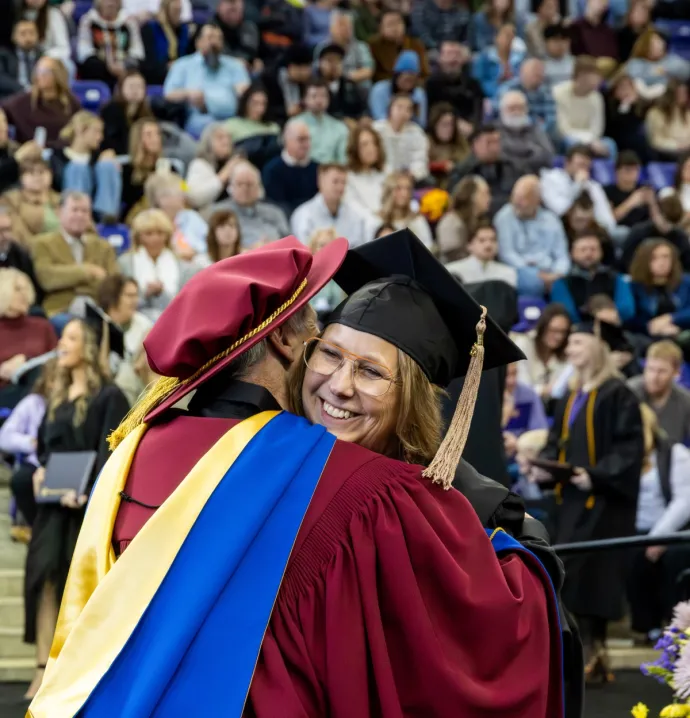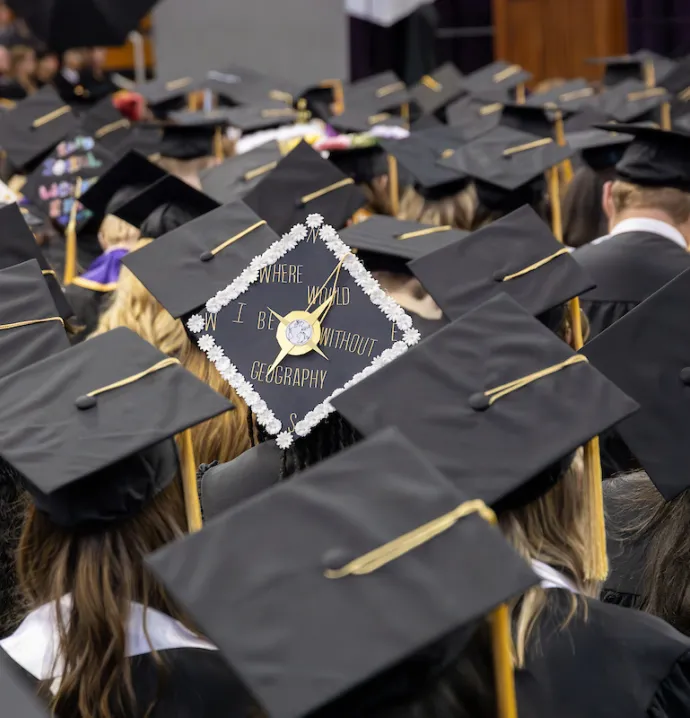Cracking the code to social distancing
Cracking the code to social distancing
For Brandon Purvis, undergraduate research at the University of Northern Iowa was a career-changing experience.
He started his computer science career with the goal of working in the networking and system administrations of industry, but a year-long stint as a researcher with assistant professor of computer science Dheryta Jaisinghani now has him considering graduate school after they developed a preliminary system for enforcing social distancing guidelines in classrooms using a new networking standard developed by Google and the revolutionary field known as the Internet of Things.
The result was BubbleNet, a system Jaisinghani and Purvis designed that identifies when, where and how social distancing has been violated in real time, in a classroom using affordable network motion sensors. It was the ideal project for both Jaisinghani to pursue her passion of mentoring students for graduate school and to give Purvis experience in undergraduate research and resulted in a published research paper that could help him pursue his graduate school interests.
“I would definitely call this one of the highlights of my undergraduate career,” Purvis, of Bellevue, Iowa, said. “I felt like I was doing something meaningful. With this kind of research, I feel like I'm actually making a change and having an impact in the world. And that's really motivating.”
But first, what is the Internet of Things? It refers to the billions of devices around the world that are now connected to the internet, such as ovens, thermostats and light switches, and endeavors to help them communicate on a standardized network. The field offers nearly limitless possibilities to make life easier through a network of connected appliances, lights, climate controls, security, entertainment systems, but also brings challenges with how to connect multiple devices when there are no current protocol standards.
“We are living in an exciting era right now where we don't just connect our smartphones or laptops or desktops to the internet,” Jaisinghani said. “But when you do not have a standardized way of connecting, it is a challenge to bring the Internet of Things to the masses,”
That’s why Google released Open Thread, a new networking standard for the Internet of Things. And UNI has joined an international group of institutions and companies, including Apple, Amazon, Ikea and more, responsible for the market education around the Thread networking protocol and certification of Thread products.
“We were thinking, what is it that we can do in our university setting to solve a problem that we are struggling with,” Jaisinghani said. “What we saw is that although we have very rigid physical distancing rules implemented, we have no way to make sure that those rules are being followed or not.”
Purvis and Jaisinghani, along with assistant professor of computer science Sarah Diesburg, tackled this problem by attaching motion sensors on classroom chairs that were connected in an Open Thread network, allowing them to communicate when their “bubble” was broken.
Purvis started his independent research on the project in the fall of 2020 and continued in the spring of 2021, when he graduated from UNI with a degree in network and systems administration. This summer, he took advantage of UNI’s Summer Undergraduate Research Program to continue his work.
Working with Jaisinghani, Purvis learned the ins and outs of conducting research and writing a research paper, as well as how to develop a workflow and tackle problems.
For Jaisinghani, who arrived at UNI a year ago after earning her doctorate in computer science from the Indraprastha Institute of Information Technology in Delhi, India and completing research stints in Singapore and Boston, working with large-scale networked systems fulfills both her passion for computer networking and student mentorship.
“What I love to do is mentor students for graduate school, and this kind of research experience gives them a primer of what graduate school will look like,” Jaisinghani said. “And I love to connect devices and come up with interesting ways where you can have some sorts of applications that are helpful for our day-to-day lives.”
The experience of working with Jaisinghani changed everything for Purvis.
“Prior to the research, my goal was to work in the network and system administration industry, but as a result of this research, I’m debating whether or not I want to go to graduate school because the research was motivating and I liked doing it,” Purvis said. “That's the utility of this kind of undergrad research at UNI - it gives you a hint of what grad school is like and it helps motivate students to go to grad school. And that's the case for me right now.”
Purvis’ chances of getting into graduate school, or succeeding in his career, is the fact that the results of BubbleNet were published in a paper that was presented at the 41st International Conference on Distributed Computing Systems, one of the premier conferences of networking.
“UNI professors put in a lot of work to help undergraduates really thrive and actually get a name out there for themselves,” Purvis said. “After this work, I have a publication. I'm an actual researcher. That's cool to just say, and that's great for a resume and a great networking tool.”




